Judging the Cats (and People) of the Santa Monica Cat Show
by Natasha Vargas-Cooper
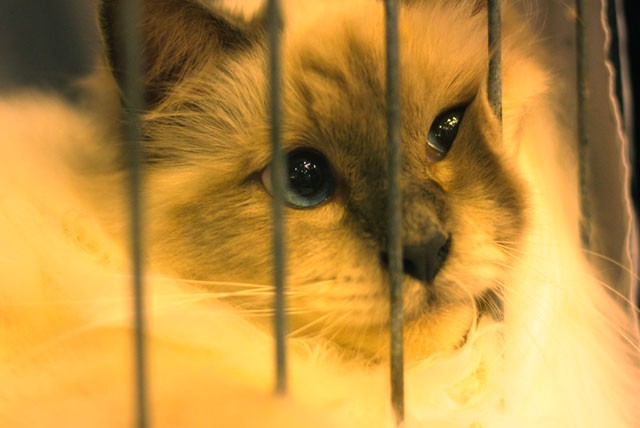
Cat shows are far more populist events than dog shows. Having a show dog can cost a fortune. Beyond paying large sums for the creature’s pure bloodline, there’s also training, kennel fees, handler salaries and all sorts of other costs. Less so with the kitties. You can get a purebred cat for well under a thousand dollars and because cats aren’t bred to do much more than live in total domesticity (lying about, sunning themselves, sprawling out inappropriately on piles of work papers, kneading air muffins) the rest comes rather cheaply. The owners of show cats mostly consider themselves to be hobbyists and regard an event like the Cat Fanciers’ Association All Breed Cat Show, hosted by the Santa Monica Cat Club this past weekend, as a kind of exhibition of their animal husbandry talents. This year’s show, which drew thousands of feline contestants, was Tiki-themed. Many owners wore shorts.
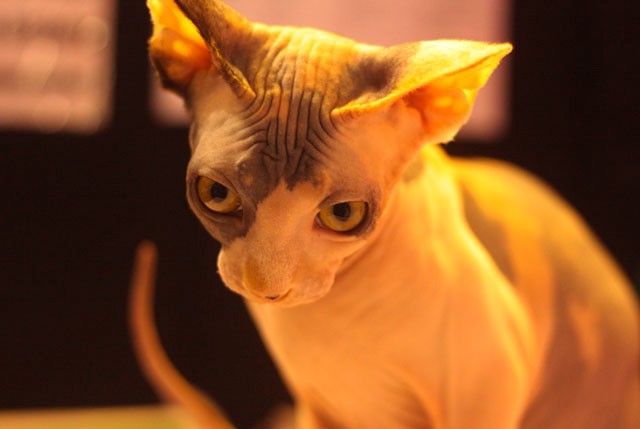
The best cat of the day was naked. Tinkerbell is a Sphynx breed; she has no coat. She looked like a wrinkly eggplant with eyes. To the touch she felt like a microwaved peach. Or a hot water bottle wrapped in suede. This Sphynx breed has only now been in existence for about thirty years, however, the Cat Fancier’s Association stopped recognizing the pink-skinned kitties as a legitimate breed briefly in the 1980s because of rampant inbreeding. Cats like Tinkerbell are from some other bloodline that does not involve mating cousins. She was my favorite cat of the whole show.
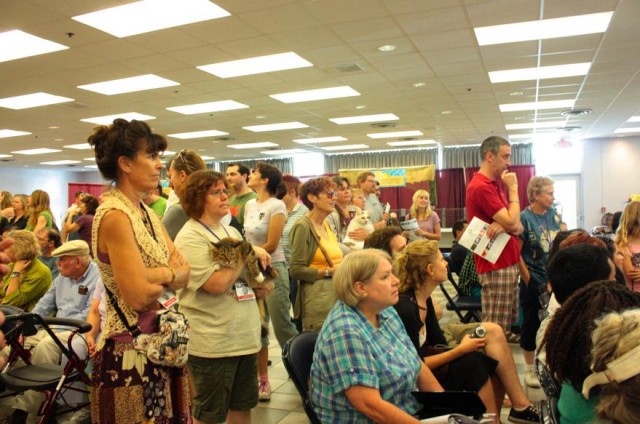
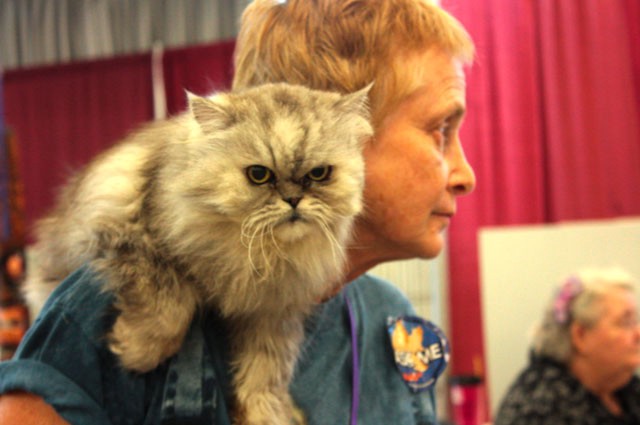
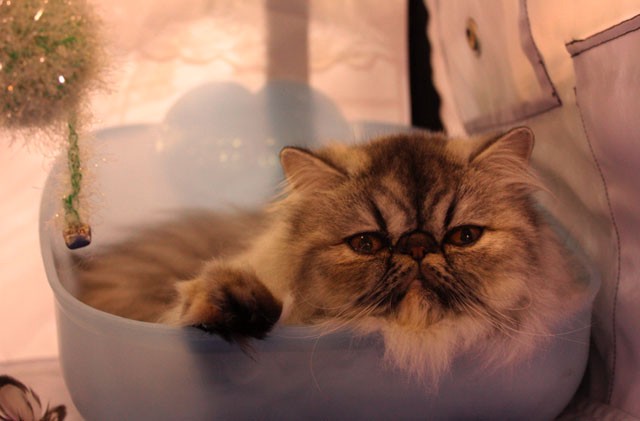
There are seven rings where the cats are judged. Their owners bring the cats into one of the large vestibules off the side of the main floor and place their cats in separate cages. Then the cat is put on a small inspection table (lined with Hawaiian flowers, elephant grass and tiki masks) before a judge. Some judges will snuggle the cats and even kiss their paws. Some cats seem to know to butter up to a judge by pushing their faces into judges or closing their eyes blissfully while purring loudly. There was no such canoodling at Ring 3. The judge at Ring 3 would grab hold of each cat by their bellies and drop them with a thud on the table, to see how squarely each could land on his feet. This judge was a man in his 60s with a gray thinning crew cut, tweezed eyebrows and a small silver ring in his ear. During his silent inspection of the cats, he would run his hands down their spine, tug their ears and pluck their tails with his pinky in the air. His small mouth would purse, then he would squint and dismiss the cat. Needless to say, the tension at Ring 3 was immense. When it finally came time for him to announce his winners, he broke into a passionate eloquence for each cat. “He sparkles, he glistens, he glows,” he said about a champagne-colored Burmese cat. Thrusting a prize-winning American Wirehair into the air he said: “Look at her gentle profile and her scooped-out nose. Her bones are balanced and she is a winner.”
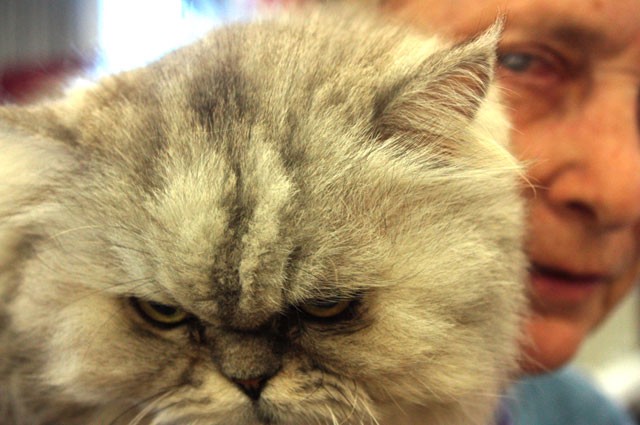
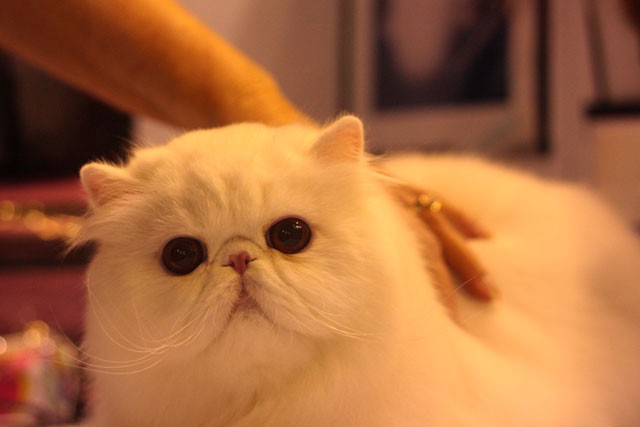
Spectators walked the floor of the grand exhibition hall with peacock feathers in their hands. The feather is used to draw the attention of the competing cats without petting them. Owners do not like it when you pet their cats because they have spent a lot of time grooming them to perfection. Persian and Himalayan cats have particularly leaky eyes that congeal into goo and so they require constant de-gooing throughout the day. Their faces are so flat and small that many essentially have their nose resting right between their eyes.
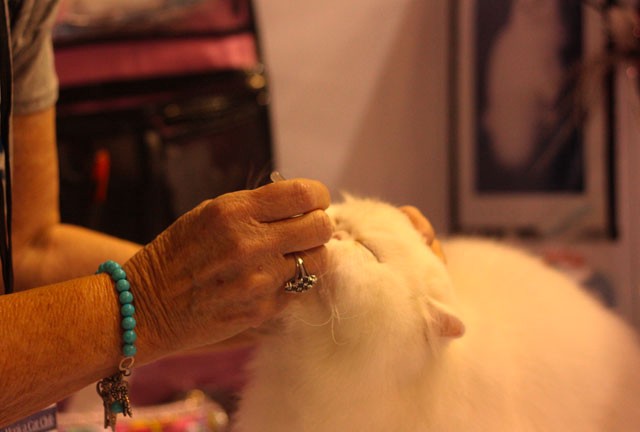
The most popular breed this year seemed to be the Japanese Bobtail. There were countless members of this breed in the competition. I do not care for this breed one bit. They lack personality and tails. They are prized for their angularity and high cheekbones, two features I neither possess nor actively covet. They have wedge-shaped heads, tubular bodies and lemon-shaped eyes. These are cats with light bones. All these Japanese Bobtails seemed haughty and their owners were ornery. I am biased towards cats with dense bones, snub noses, round faces and girth, like this astonishing British Short Hair.
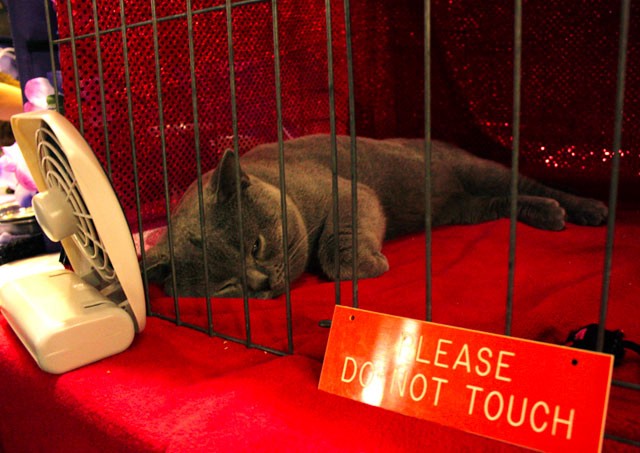
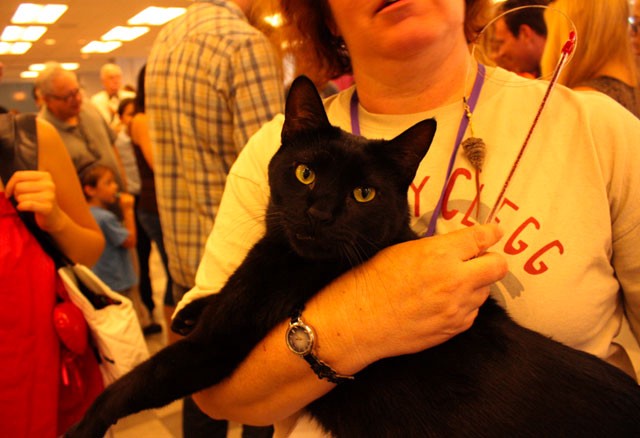
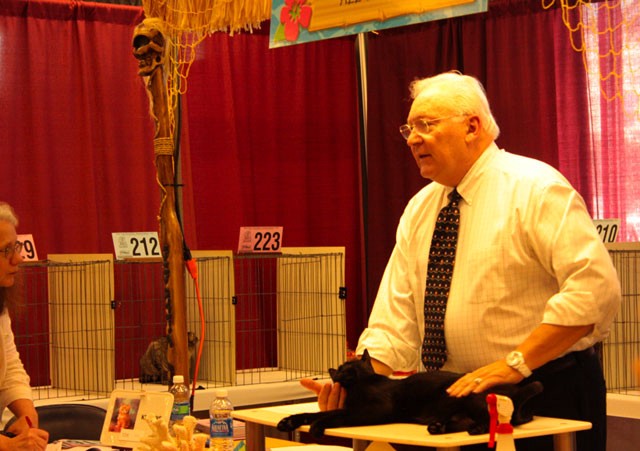
Household pets are the most popular and beloved category among the cat fanciers. This is a category for rescued cats, shelter mutts, domesticated strays; the genetic riffraff of the feline world. (Of course no such category exists in the Westminster Dog Show.) The crowd gets rowdy for this lot and the owners take particular pride in being, pardon the phrase, the underdogs. The judge for the Households told the crowd that he picked his winners based on their health, their personality and if they seemed like the sort of cat who would “curl up on a Vermont night in a rocking chair and read a book with you.” He said of Lancelot, a mustachioed mutt who was rescued from a shelter this March, “This cat has a gentle personality even though he had no one to love him. He lived on the streets and now he is cared for, he is alert, and he wants to know all your names.” Before making his final selection, the judge would take a pen and run it along the bars of each cat’s cage. When someone from the crowd asked about the mysterious ritual, the judge said, “That’s when I let the cats tell me what place they should get.” Lancelot placed third in the Household category.
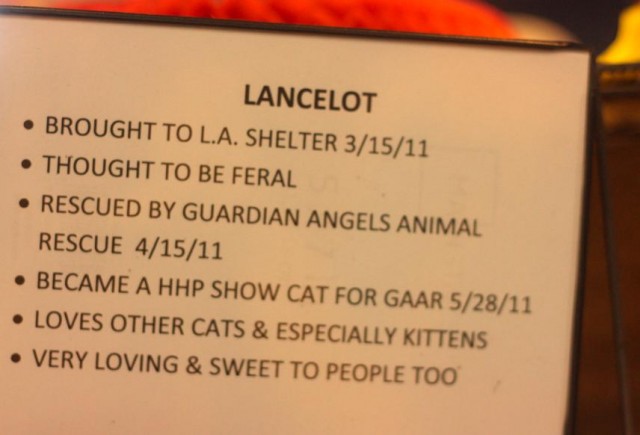
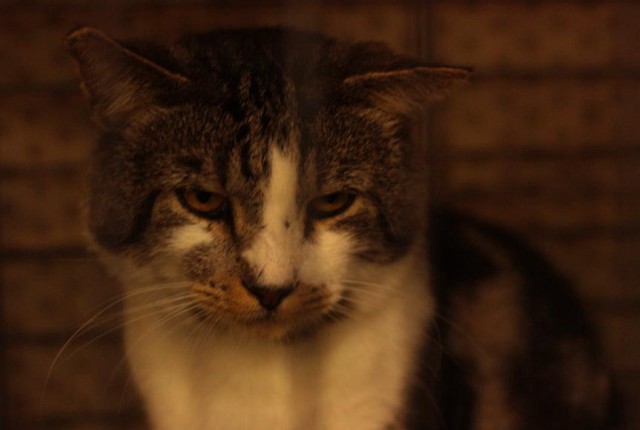
Natasha Vargas-Cooper likes cats but is far more interested in gibbons and marmosets and men.
